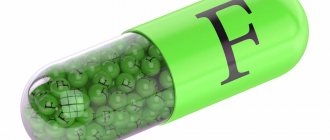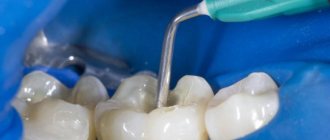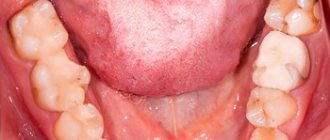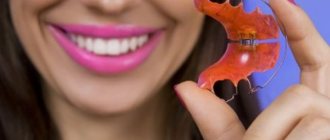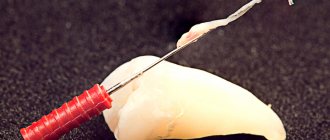| Arsenic | |
| Atomic number | 33 |
| Appearance of a simple substance | |
| Properties of the atom | |
| Atomic mass (molar mass) | 74.92159 a. e.m. (g/mol) |
| Atomic radius | 139 pm |
| Ionization energy (first electron) | 946.2(9.81) kJ/mol (eV) |
| Electronic configuration | [Ar] 3d10 4s2 4p3 |
| Chemical properties | |
| Covalent radius | 120 pm |
| Ion radius | (+5e)46 (-3e)222 |
| Electronegativity (Pauling) | 2,18 |
| Electrode potential | 0 |
| Oxidation states | 5, 3, −3 |
| Thermodynamic properties of a simple substance | |
| Density | 5.73 (grey arsenic) /³ |
| Molar heat capacity | 25.05 /(mol) |
| Thermal conductivity | (50,2) /(·) |
| Melting temperature | 1090 |
| Heat of Melting | n/a kJ/mol |
| Boiling temperature | 876 |
| Heat of vaporization | 32.4 kJ/mol |
| Molar volume | 13.1 ³/mol |
| Crystal lattice of a simple substance | |
| Lattice structure | rhombohedral |
| Lattice parameters | a=4.132 α=54.13 |
| c/a ratio | 2,805 |
| Debye temperature | 285K |
| As | 33 |
| 74,9216 | |
| 4s24p3 | |
| Arsenic | |
Mouse
yac is a chemical element with atomic number 33 in the periodic table, symbolized by As.
It is a brittle, steel-colored semi-metal. Diagram of an arsenic atom
The name of arsenic in Russian is associated with the use of its compounds for the extermination of mice and rats. Greek name arsenikon
comes from the Persian زرنيخ (zarnik) - “yellow orpiment.” Sometimes it is derived from the Greek “arsen” - strong, powerful.
What is arsenic - composition and what it looks like
Arsenic (arsenicum) is a chemical element that has necrotizing properties. That is, it and its salts literally poison living tissues, which leads to their death. This substance has long been used as a poison to combat insects and small rodents. But in dentistry it began to be used from the beginning of the 19th century. Here it is used in combination with hydrogen - this component used to be part of most devitalizing pastes.
The mixture is used to carry out the devitalization procedure in case of damage to the pulp, that is, the neurovascular bundle. If there is no longer any chance of saving the nerve, it is removed, but not before it is completely killed. What arsenic looks like in a tooth is shown in the photo below.
The photo shows arsenic in a tooth.
Chemically neutral dyes are added to the composition to create a contrast with the color of the enamel. Therefore, after application, the product looks like a homogeneous mass of dark blue color. But under the light of a dental lamp, hard tissues and the applied substance contrast sharply, which facilitates the process of cleaning dentin from deposits.
As for whether this substance is now used in dentistry, it should be noted that specialists usually resort to the help of more modern and effective devitalizing compounds, which are much less toxic and dangerous to the body. However, in some clinics, especially in public ones, this practice is still relevant, so it is too early to leave this technique out of the picture.
Biological role and physiological effect
Arsenic and all its compounds are poisonous
.
In acute arsenic poisoning, vomiting, abdominal pain, diarrhea, and depression of the central nervous system are observed. The similarity of the symptoms of arsenic poisoning to the symptoms of cholera for a long time allowed the successful use of arsenic compounds (most often arsenic trioxide) as a lethal poison. In France, arsenic trioxide powder for its high “efficiency” received the common name “hereditary powder” (French: poudre de succession
). In 1832, a reliable qualitative reaction to arsenic appeared - the Marsh test, which significantly increased the efficiency of detecting poisonings.
Help and antidotes for arsenic poisoning: taking aqueous solutions of sodium thiosulfate Na2S2O3, gastric lavage, taking milk and cottage cheese; a specific antidote is unithiol. The maximum permissible concentration in the air for arsenic is 0.5 mg/m³. Work with arsenic in sealed boxes using protective clothing. Due to their high toxicity, arsenic compounds were used by Germany as poisonous agents in the First World War. There is an assumption that Napoleon was poisoned with arsenic compounds on the island of St. Helena.
In areas where there is an excess of arsenic in the soil and water, it accumulates in the thyroid gland in people and causes endemic goiter.
Arsenic in small doses is carcinogenic, its use as a “blood improver” medicine (so-called “white arsenic”, for example “Blo Arsenic Tablets”, etc.) continued until the mid-1950s, and made a significant contribution in the development of cancer.
Recently, a man-made environmental disaster in southern India received wide publicity - due to excessive water withdrawal from aquifers, arsenic began to leak into drinking water. This caused toxicity and cancer in tens of thousands of people.
It was believed that “microdoses of arsenic, introduced with caution into a growing organism, promote the growth of human and animal bones in length and thickness; in some cases, bone growth can be caused by microdoses of arsenic during the period of termination of growth.”
It was also believed that “With prolonged consumption of small doses of arsenic, the body develops immunity: This fact has been established for both people and animals. There are cases where habitual consumers of arsenic immediately took doses several times higher than the lethal dose and remained healthy. Experiments on animals have shown the uniqueness of this habit. It turned out that an animal accustomed to arsenic by consuming it quickly dies if a significantly smaller dose is injected into the blood or under the skin.” However, such “addiction” is very limited in nature, in relation to the so-called. “acute toxicity” and does not protect against neoplasms. However, the effects of microdoses of arsenic-containing drugs as an anticancer agent are currently being investigated.
Why is arsenic placed in a tooth - indications for installation
As mentioned above, the paste is usually used to treat pulpitis. Sometimes it is permissible to use the remedy for periodontitis, but this practice is quite rare. So, what does this substance do in the tooth and why is it put there in the first place? The main purpose of such drugs is to “kill” the pulp at the root before removing the nerve. Thus, the paste is placed inside the diseased tooth for a limited time, during which the drug gradually destroys the neurovascular bundle. At the end of the time specified by the doctor, the patient comes for a second appointment for final removal of the pulp and prosthetics.
The drug can be used in the treatment of pulpitis
Due to its cytotoxic effect on cells, arsenic paste blocks the functioning of nerve endings, which stop sending signals to the brain and are gradually destroyed. The blood supply to the pulp is also stopped and the cavity is disinfected. In some situations, this remedy is used as an emergency pain reliever, when the tooth hurts badly, and there is simply no other way to relieve the pain.
On a note! Many people are interested in the question: how much does it cost to install a filling with arsenic? So, if the cost of installing a temporary filling starts from about 350-400 rubles, which largely depends on the material used, then the price of fixing a filling with medicinal paste starts from 500 rubles
Thus, among the main indications for the application of a devitalizing agent, experts in the field of dentistry identify the following pathological conditions:
- all types of inflammation of the pulp with fully formed roots - pulpitis, including those complicated by periodontitis,
- lack of opportunity to perform vital pulpectomy, that is, the use of a faster and safer method of nerve removal. This procedure is usually refused if there is a high risk of an allergic reaction to the anesthetic,
- emergency cases when there are no other options to relieve the patient from acute pain due to pulpitis.
The toxic substance is not used if there are contraindications, for example, allergies, pregnancy and lactation, or increased intraocular pressure. In the latter case, the patient risks subsequently encountering glaucoma. Such preparations are also not used if the roots are not fully formed or if there is perforation of the root canal. But how much arsenic is assigned directly depends on the patient’s age and the individual characteristics of his clinical picture.
Links[edit]
- Shahashiri, B.Z. "Chemical of the Week: Arsenic". University of Wisconsin-Madison Department of Chemistry Archived from the original on 2008-08-02. Retrieved August 3, 2008.
- ^ abcdefghi "Monograph on arsenic trioxide for professionals". Drugs.com
. Retrieved November 15, 2022. - Landner, Lars (2012). Chemicals in the Aquatic Environment: Extended Hazard Assessment. Springer Science & Business Media. item 259. ISBN. 9783642613340.
- British National Formulary: BNF 76
(76th ed.). Pharmaceutical press. 2022. p. 907. ISBN. 9780857113382. - "Use of Arsenic Trioxide (Trisenox) during Pregnancy". Drugs.com
. Retrieved November 16, 2022. - Sun, Hongzhe (2010). Biological chemistry of arsenic, antimony and bismuth. John Wiley and Sons. p. 295. ISBN 9780470976227.
- World Health Organization (2019). World Health Organization Model List of Essential Medicines: 2019 Top Twenty List
. Geneva: World Health Organization. HDL: 10665/325771. WHO/MVP/EMP/IAU/2022.06. License: CC BY-NC-SA 3.0 IGO. - ^ a b c d Grund, South Carolina; Hanusch, K.; Wolf, H. U. "Arsenic and arsenic compounds." Ullman Encyclopedia of Industrial Chemistry
. Weinheim: Wiley-VCH. DOI: 10.1002/14356007.a03_113.pub2. - Consolidated list of products whose consumption and/or sale have been banned, withdrawn, severely restricted, or not approved by governments: chemicals. United Nations Publications. 2009. p. 24. ISBN 9789211302196.
- Zhu, J.; Chen, Z.; Lallemand-Breitenbach, V.; De Te, H. (2002). "How Acute Promyelocytic Leukemia Revived Arsenic." Nature Reviews Cancer
.
2
(9): 705–714. DOI: 10.1038/nrc887. PMID 12209159. S2CID 2815389. - "Proposal for inclusion of arsenic therapy in the WHO Model List of ESSENTIAL MEDICINES for the treatment of acute promyelocytic leukemia" (PDF). WHO
. Retrieved November 15, 2022. - Jump up
↑ Rao Y, Li R, Zhang D (June 2013).
"A cure for poison: how arsenic trioxide was discovered to have therapeutic effects in acute promyelocytic leukemia". Sci China Life Sci
.
56
(6):495–502. doi:10.1007/s11427-013-4487-Z. PMID 23645104. - Jump up
↑ Bian Z, Chen S, Cheng C, Wang J, Xiao H, Qin H (2012).
"Development of new drugs from the annals of Chinese medicine". Acta Pharmaceutica Sinica B
.
2
: 1–7. DOI: 10.1016/j.apsb.2011.12.007. - Au, W.-Y.; Kumana, CR; Kou, M.; Mack, R.; Chan, G. C.; Lam, C.-W.; Kwong, Y.-L. (2003). "Oral arsenic trioxide in the treatment of relapsed acute promyelocytic leukemia". Blood
.
102
(1):407–408. DOI: 10.1182/blood-2003-01-0298. PMID 12814916. - Gibaud, S.; Jaouen, G. (2010). Arsenic-based drugs: from Fowler's solution to modern anticancer chemotherapy
.
Sections of organometallic chemistry. 32
. pp. 1–20. Bibcode: 2010moc..book…. 1G. DOI: 10.1007/978-3-642-13185-1_1. ISBN 978-3-642-13184-4. - "Stanton v. Benzler 9716830". US Court of Appeals for the 9th Circuit. 1998-06-17. Retrieved June 9, 2008. (...) was convicted by a jury of first-degree murder for poisoning her ex-husband. Her ex-husband's body was found with traces of arsenic trioxide.
- Emsley, J. (2006). "Arsenic". The Elements of Murder: A History of Poison
. Oxford University Press. pp. 93–197. ISBN 978-0-19-280600-0. - Flaubert, G. (1856). Madame Bovary
. - "Arsenic Eaters". New York Times
. July 26, 1885 - Allesch, R. M. (1959). Arsenic. Seine Geschichte in Österreich
.
Archiv für vaterländische Geschichte und Topographie. 54
. Klagenfurt: Kleinmayr. - Przygoda, G.; Feldmann, J.; Cullen, W. R. (2001). "Arsenic Eaters of Styria: Another Picture of People Chronically Exposed to Arsenic." Applied organometallic chemistry
.
15
(6):457–462. DOI: 10.1002/aoc.126. - Whorton, J. C. (2010). Arsenic century. Oxford University Press. pp. 270 -273. ISBN 978-0-19-960599-6.
- "Giant Mine - Northwest Territories Region - Indian and Northern Affairs Canada". Archived from the original on 2004-08-12. Retrieved August 28, 2007.
- ^ abcd Handbook of Preparative Inorganic Chemistry, 2nd ed. Edited by G. Brouwer, Academic Press, 1963, NY.
- Garavelli et al. 2013, https://www.minsocam.org/msa/ammin/toc/Abstracts/2013_Abstracts/FM13_Abstracts/Garavelli_p470_13.pdf
- Kampf et al. 2013, https://minmag.geoscienceworld.org/content/78/3/747.abstract
- Greenwood, New York; & Earnshaw, A. (1997). Chemistry of the Elements (2nd ed.), Oxford: Butterworth-Heinemann. ISBN 0-7506-3365-4.
- Wells A.F. Structural inorganic chemistry. 5th. London, England: Oxford University Press, 1984. Print. ISBN 0-19-855370-6
- Holleman, A.F.; Wiberg, E. (2001). Inorganic chemistry
. San Diego: Academic Press. ISBN 0-12-352651-5.
How long can a substance stay in a tooth?
We should dwell on the question of how long people usually wear a temporary filling; let’s look at it in more detail. The doctor determines the duration based on the composition of the product used, the age of the patient and the complexity of each individual case.
How long to keep a child, teenager and adult - how long does it take for the drug to kill the nerve?
The substance is usually used on adult patients, and is left on for just a couple of days. However, the exact duration of this process depends on the location of the tooth, the number of canals in it, and the complexity of the clinical picture. It is worth noting that there are long-acting devitalizing pastes, and such compositions can be left for a period of no more than 2 weeks. Today, children are no longer given dangerous poison. But before, he was left for no longer than one day. If we are talking about baby teeth, the permissible period was reduced to 16 hours.
Children are no longer given dangerous poison today.
What determines the period for which the devitalizing paste is left in place?
As mentioned above, the period depends on many different factors, including the age of the patient, his state of health and the clinical picture as a whole. The duration of action of the paste depends on what kind of drug the specialist used. Safer compositions, which often do not contain toxic components at all, last longer, which is why you have to wear a temporary filling for a week or even two.
How soon can you start eating?
The devitalizing substance is covered with a regular temporary filling. After its installation, you can eat and drink within 1-2 hours. However, experts recommend avoiding too intense touching of the diseased element, so it is better to give up solid foods for a while. You will also have to give up alcohol, since it enhances or, conversely, neutralizes the effect of a toxic substance, which can cause serious complications.
The photo shows a treatment regimen using arsenic
Interesting Facts
There are a lot of interesting facts related to arsenic. It is worth starting with the fact that arsenic is a toxic substance and poses a serious danger to human health. In history, it was often used to poison high-ranking and influential figures of the time. Due to the fact that arsenic poisoning could not be recognized until 1836 (the discovery of the Marsh sample). An example is a figure like Napoleon. Experts for some time assumed that the military commander was poisoned with arsenic due to its high concentration in his hair.
Another significant figure is Grigory Rasputin. They tried to poison him with arsenic, but the attempt was a failure. Rasputin knew that they were going to poison him and began to take this element in small doses and thus achieved immunity to this poison. Because of this event, Grigory Rasputin earned himself the reputation of a witcher and occultist. Due to the huge number of poisonings in high-ranking circles, mvshyak was nicknamed “poison of kings” or “royal poison”.
Another interesting point is that in 1858, mass arsenic poisoning occurred in the English city of Bradford. The poisonous element was added to sweets that were sold in an ordinary street shop. As a result of this poisoning, 21 people died, and more than 200 were poisoned.
How arsenic is used - description of the depulpation process
To kill a nerve, you will have to visit the dentist several times. If the case is standard, two visits to the doctor will be enough - to place the substance and remove it, followed by removal of the pulp. This process is discussed in more detail below.
How does the installation work?
The process of applying paste to the causative tooth is as follows:
- first, the pulp is released, carious lesions are removed,
- the doctor places a small ball of paste on the exposed tissue,
- a temporary filling is placed on top, usually based on artificial dentin,
- tooth treatment after arsenic involves removing the filling after the prescribed period, removing the remaining paste and cleaning the canals,
- At the final stage, a permanent filling is fixed.
The photo shows arsenic paste
. Important! Do not overexpose the medicinal mixture. Most pastes can be worn for no more than 2 days. Then it will begin to act on the periodontal tissues, destroying them. Usually the doctor himself sets the date for the return visit. The absence of pain does not mean that the problem has passed - this is only the result of the use of painkillers.
How to get the drug
The dentist himself determines the time during which the product should remain in the tooth. The patient is strictly forbidden to remove the paste prematurely on his own or, as mentioned above, to walk with it longer than expected. How many hours or days the composition will have to be kept in the mouth is calculated taking into account the condition of the diseased tooth, the number of roots, the age of the patient and, accordingly, the purpose of using the paste.
In order to destroy one canal, on average it takes about 24 hours - this applies to adult patients. In the same case, if the doctor is dealing with several canals at once, it will take more time to kill them. However, walking with arsenic paste for longer than 48 hours is highly not recommended. The dentist must carefully calculate the effect of the product and schedule the exact time of the next visit to remove the drug.
Important! If we are talking about treating a child, then the permissible time for the presence of arsenic in the tooth is significantly reduced. In pediatric dentistry, such a medicine is usually not used for longer than 12-18 hours; in complex cases, an extension of up to 24 hours is allowed, but this is the maximum limit1.
The photo shows the process of removing a temporary filling.
Is it possible to extract it yourself?
If, after installing a temporary filling, the pain intensifies and persists for a long time, this may indicate further spread of the toxic effect of the drug. In this case, healthy tissues are at risk. This is an emergency situation, in which it is possible to independently remove a temporary filling with a bookmark. Of course, if there is no way to urgently get an appointment with a specialist.
This should be done as carefully as possible, after which it is recommended to rinse your mouth with a solution of soda, iodine or hydrogen peroxide. You can also rinse your mouth with milk - it effectively neutralizes the toxic effects of the poison. It is better, of course, to contact a specialist by phone to receive detailed instructions. You should visit your dentist as soon as possible to avoid complications.
Allotropy and allotropic modifications of arsenic
Like phosphorus, arsenic exists in several allotropic forms. With rapid cooling of steam (consisting of As4 molecules), a non-metallic fraction is formed - yellow arsenic (density 2.0 g / cm 3), isomorphic to white phosphorus and, like it, soluble in carbon disulfide. This modification is less stable than white phosphorus, and when exposed to light or low heating it easily transforms into a metallic modification - gray arsenic (Fig. 1). It forms a steel-gray brittle crystalline mass with a metallic sheen when freshly fractured. The density is 5.75 g/cm3. When heated under normal pressure, it sublimates. Has metallic electrical conductivity.
Rice. 1. Gray arsenic. Appearance.
How harmful is it and what will happen if the substance has been in the tooth for a long time
In everyday practice, dentists try to eliminate products containing arsenic from their work. Despite the fact that most examples of the use of such pastes are positive, their effect on the human body has not been fully studied. Most of the negative consequences known in dental practice are caused by the negligence of patients who ignore the doctor’s recommendations and wear the medicine for more than 3 days.
“As for me, arsenic is generally an outdated method! Is it really still used in dentistry?! I remember back in Soviet times, a friend of mine was given this paste, but he didn’t make it in time for the visit and arrived the next day. So some necrotic processes had already begun there, his gums began to darken, he barely had time! I wouldn’t risk it; I’m sure that today there are safer medications with a similar effect.”
Tin_78, Saratov, from correspondence on a thematic forum
The most common complications are the following processes and phenomena: swelling of the pulp, blackening of surrounding tissues, inflammatory processes in adjacent tissues - drug-induced periodontitis, necrotic processes in the tissues of the periosteum, toxic poisoning of the body and disruption of the natural metabolism of microelements.
Toxicology[ | ]
Arsenic(III) oxide is poisonous. The toxicity of trioxide has become legendary and has been widely reported in the literature[10][11][11][12].
In Austria there lived “arsenic eaters” who received doses many times greater than the lethal dose without much harm to health. Arsenic is believed to improve performance, especially when working at high altitudes[13][14][15].
The maximum permissible concentration for inorganic arsenic compounds, including As2O3, is 0.01 mg/m³.
Semi-lethal dose - 19.1 mg/kg [ source not specified 2013 days
]
Why does pain occur?
Painful sensations may persist if the patient has increased tooth sensitivity. In such a situation, he can feel the entire process of tissue necrosis. It is important to monitor the intensity of this symptom. In the normal course of events, the pain gradually subsides and eventually disappears, as does the process of death of the neurovascular bundle itself.
You may feel sore for a couple of days
Moreover, the duration of necrotization largely depends on the individual characteristics of each individual organism. It happens that the pulp dies literally within a day, and in other situations the process of killing it takes as long as 2 days. In order not to worry unnecessarily, you should listen to your feelings and monitor your body’s reaction. So, if swelling and obvious redness of the gums appear, as well as if the enamel darkens and a headache occurs, you should immediately consult a specialist - there is a possibility of complications developing.
Obtaining arsenic.
Arsenic is obtained mainly as a by-product of the processing of copper, lead, zinc and cobalt ores, as well as during gold mining. Some polymetallic ores contain up to 12% arsenic. When such ores are heated to 650–700° C in the absence of air, arsenic sublimes, and when heated in air, volatile oxide As2O3 is formed - “white arsenic”. It is condensed and heated with coal, and arsenic is reduced. Producing arsenic is a harmful production. Previously, when the word “ecology” was known only to narrow specialists, “white arsenic” was released into the atmosphere, and it settled on neighboring fields and forests. The exhaust gases from arsenic plants contain from 20 to 250 mg/m3 As2O3, while the air usually contains approximately 0.00001 mg/m3. The average daily permissible concentration of arsenic in the air is considered to be only 0.003 mg/m3. Paradoxically, even now it is not the factories that produce arsenic that pollute the environment much more heavily, but non-ferrous metallurgy enterprises and power plants that burn coal. Bottom sediments near copper smelters contain huge amounts of arsenic – up to 10 g/kg. Arsenic can also enter the soil with phosphorus fertilizers.
And another paradox: they receive more arsenic than is required; This is quite a rare case. In Sweden, “unnecessary” arsenic was even forced to be buried in reinforced concrete containers in deep abandoned mines.
The main industrial arsenic mineral is arsenopyrite FeAsS. There are large copper-arsenic deposits in Georgia, Central Asia and Kazakhstan, the USA, Sweden, Norway and Japan, arsenic-cobalt deposits in Canada, and arsenic-tin deposits in Bolivia and England. In addition, gold-arsenic deposits are known in the USA and France. Russia has numerous arsenic deposits in Yakutia, the Urals, Siberia, Transbaikalia and Chukotka.
Why might your temperature rise?
If arsenic is left in a tooth, the patient may develop a fever. There is no need to worry about this ahead of time, since during the period of root death this is a fairly common occurrence. After the procedure, the specialist usually recommends certain painkillers and antipyretics.
As for whether it is possible to get poisoned, here it is necessary to note the risk of drug-induced inflammation. This situation risks happening if the doctor places the filling too tightly. Poisoning in this case leads to the following symptoms: swelling, high temperature, severe piercing pain. The pathological process can also provoke the development of an abscess, so if you experience such symptoms, you should see a doctor as soon as possible.
After the procedure, there may be an increase in temperature
Being in nature
Arsenic is a trace element. The content in the earth's crust is 1.7·10-4% by mass. This substance can occur in a native state and has the appearance of metallic shiny gray shells or dense masses consisting of small grains. About 200 arsenic-containing minerals are known. It is often found in small concentrations in lead, copper and silver ores. Two natural compounds of arsenic and sulfur are quite common: orange-red transparent realgar AsS and lemon-yellow orpiment As2S3. A mineral of industrial importance is arsenopyrite (arsenic pyrite) FeAsS or FeS2•FeAs2; arsenic pyrite - löllingite (FeAs2) is also mined.
Possible problems and complications
Now let’s take a closer look at the question of why arsenic in a tooth is dangerous and what will happen if you walk with it for too long. If you overexpose a caustic substance, complications may arise. But we must admit that today such situations are very rare. Inflammation and necrosis of healthy tissues are usually the result of inept actions of the doctor. The reason may be an incorrect placement of the substance or an insufficiently tight seal. If the canals have been poorly treated, there is a risk of re-inflammation.
After installing a temporary filling, some discomfort is possible, but if the pain intensifies, becomes acute and swelling increases, such symptoms indicate further development of the pathological process. Perhaps the doctor performed the procedure incorrectly, and the active substance does not come into contact with the nerve endings. You should contact a specialist as soon as possible.
Leaving a toxic substance for too long can also lead to dentin darkening and gum necrosis. Hard tissues will begin to gradually deteriorate, and there will be a risk that the pathological process will spread to neighboring elements. But if you swallow arsenic, nothing bad will happen. Such precedents happened quite often. The dose in which the substance is placed in the pulp chamber is safe for the body. Therefore, if you happen to eat such a small amount, there is no need to panic ahead of time. However, in cases of larger overdose, serious disturbances in the functioning of the liver and gastrointestinal tract are possible.
Leaving the substance in the tooth for a long time can cause darkening of the tooth.
Heating arsenopyrite in muffle furnaces
To obtain metallic arsenic, arsenopyrite is most often heated in muffle furnaces without access to air. At the same time, arsenic is released, the vapors of which condense and turn into solid arsenic in iron tubes coming from the furnaces and in special ceramic receivers. The residue in the furnaces is then heated with access to air, and then the arsenic turns into As2O3. Metallic arsenic is obtained in rather small quantities, and the main part of arsenic-containing ores is processed into white arsenic, that is, into arsenic trioxide - arsenic anhydride As2O3.
Acceptability of use during pregnancy, breastfeeding and children
The use of toxic drugs during pregnancy or breastfeeding is strictly prohibited, and here are several reasons for this restriction:
- the toxic effect of such drugs on the fetus and child has not yet been fully studied, so the consequences for the baby can be the most unpredictable,
- there is a high probability of poison penetration into the gastrointestinal tract and severe poisoning of the entire body,
- a detrimental effect on the condition of dentin and its gradual destruction if the drug is not removed in time.
Before starting treatment, a woman is obliged to warn a specialist about her condition so that he can offer safer therapy. If we are talking about the treatment of primary incisors and molars, then the specialist adjusts the duration of the paste, taking into account the age of the small patient. Previously, in such cases, a toxic substance was placed for about a day. However, in the absence of serious problems, it could be removed after 16 hours. Today, this substance is not used in pediatric dentistry, and it has been replaced by modern and safer drugs.
Today, when possible, specialists try to avoid the use of such toxic substances in dental practice. However, if you have to use the paste, then the patient must follow all the dentist’s instructions as strictly as possible in order to minimize any risks of harm to the body.
1Borovsky Ya.V. Treatment of complications of dental caries: problems and their solutions, 1999.
Treatment in hospital
If the poisoning is determined to be severe, the patient will be transported to the department. There, under medical supervision, he will receive the necessary treatment:
Read also: Gasoline poisoning in humans
- Antidotes. The introduction of an antidote is a necessary step in the treatment of poisoning. In case of acute arsenic intoxication, Unithiol will play this role as the main antidote. It neutralizes the poison, turning it into a safe compound, and removes it from the body along with urine. It is administered intravenously (injection or dropper) or intramuscularly. In the chronic form, D-penicillamine is used as an antidote - one gram orally 4 times a day.
- Oxygen. Inhalations with it are indicated for arsenic vapor poisoning.
- Atropine + morphine. They are administered by injection if pain in the stomach persists.
- Hemodialysis, blood transfusion, increased diuresis. They are carried out selectively depending on how badly the kidneys are damaged.
- Novocaine + glucose in the presence of blood in the urine.
- Calcium chloride (or saline + glucose + adrenaline) to maintain blood pressure and maintain fluid volume in the body.
Treatment after severe poisoning can last up to 2 years. Therefore, after an inpatient course, it is necessary to adhere to rehabilitation standards: do not violate the drinking regime, take baths with alkalis, follow the prescribed diet, and continue vitamin therapy.
